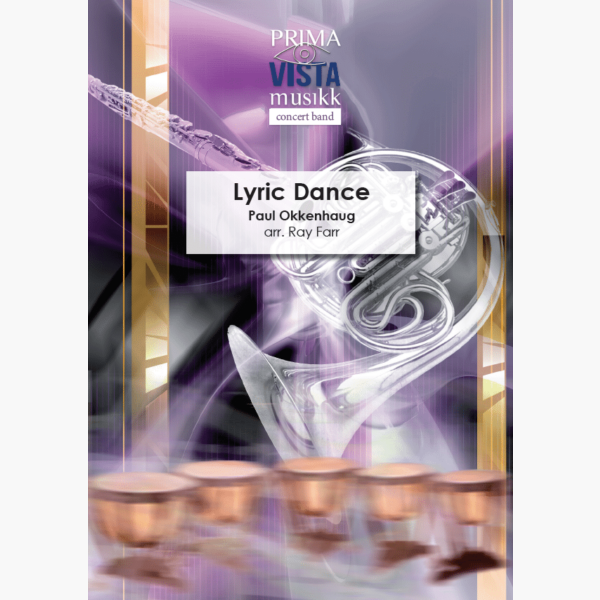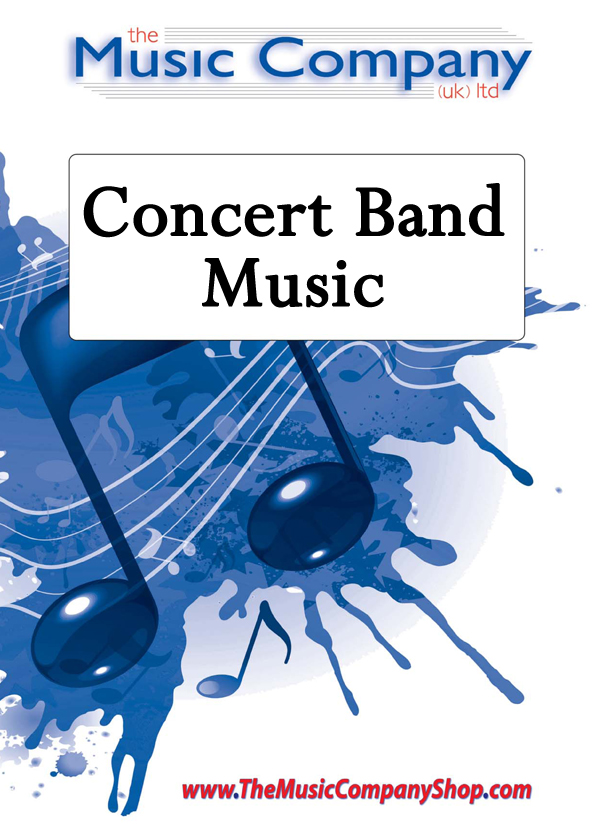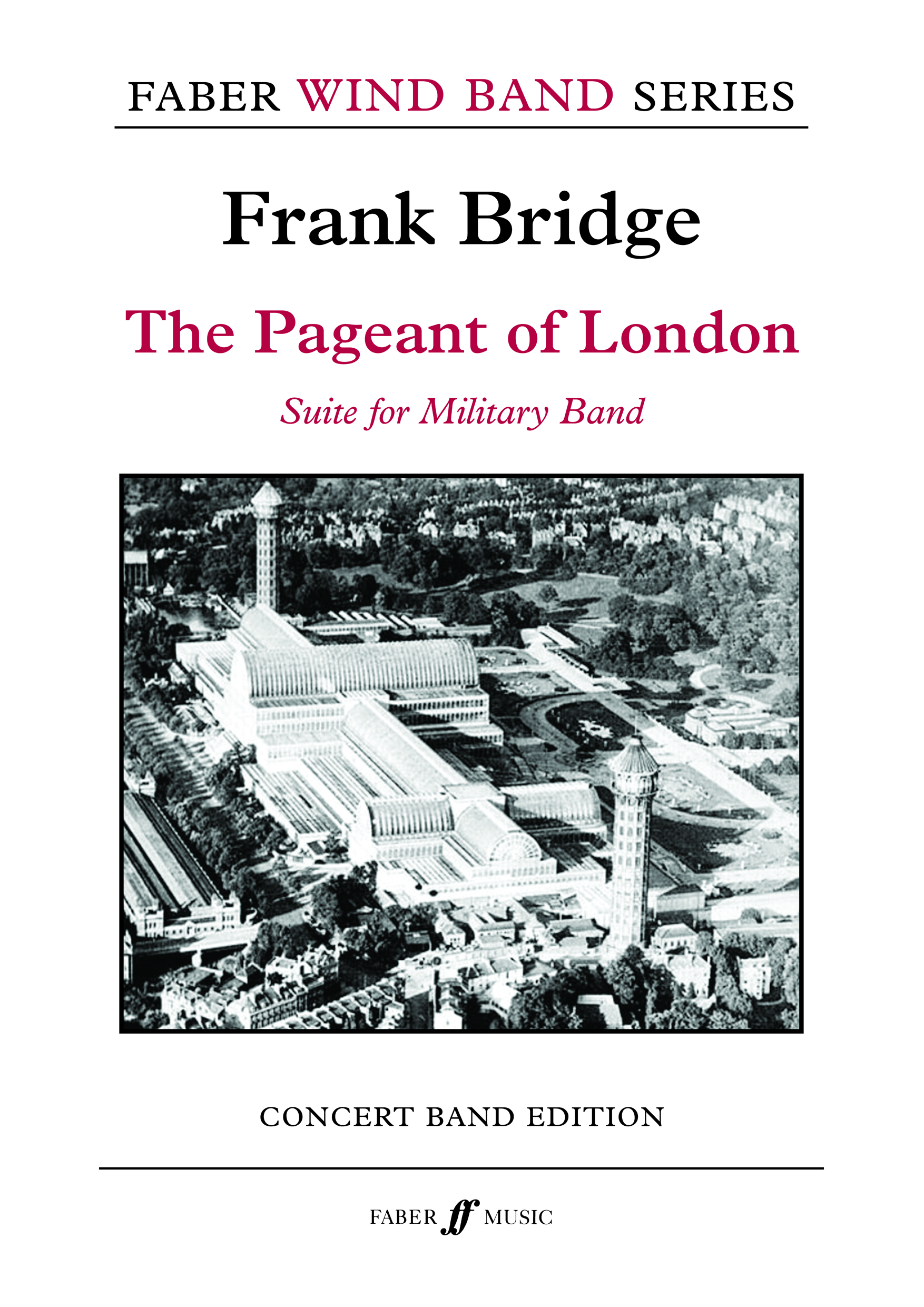Results
-
 £109.99
£109.99Catedrales - Bert Appermont
Cathedrals have always appealed to the imagination. Hundreds of years of manpower have been invested in their building and it is not for nothing that today they represent imposing symbols of architecture and history. The cathedral is also a great source of inspiration for compositions, drawing on a full palette of acoustic echo effects, Gregorian melodies and organ based choral themes.The work "Catedrals" opens with a five tone motif using double tonguing which resonates through space. Then comes a Gregorian antiphonal theme "Salve Regina" which is heard in the euphonium and later combines with the opening motif. The quicker passage that follows is basedentirely on the intervals in the motif which by now has added rhythmic variations and develops in different forms, including a fugue. The work then builds towards its first climax, from which unusual muted sounds emerge creating an atmosphere shrouded in mystery.Gradually, more melodious fragments are added to the Gregorian antiphonal theme which develops into an expansive choral, emulating the organ and which rises above the sound mass. The work grows more powerful and brilliant in sound until it culminates in a short and explosive finale wherein elements from the whole work come together.
Estimated dispatch 7-14 working days
-
 £174.10
£174.10Nde - Iver Kleive
This is the finale from the original soundtrack of the opening ceremony of the XVII Olympic Winter Games in Lillehammer, Norway, 1994. The piece was composed by Knut Reiersrud, Iver Kleive and Marilyn Mazur. It features them all as musicians; Marilyn Mazur (percussion), Knut Reiersrud (guitar) and Iver Kleive (organ) together with Linda vreb - vocals, Odd Lund - piccolo trumpet, Kjell Erik Arnesen - French horn and The Boys Choir of Oslo Cathedral.Performance notes:The horns should be standing close to the organ.To get the desired effect from the "Solo percussion"-part, please listen to the original recording of this piece Nde recorded by Kleive/ Reiersrud/ Mazur at the Kirkelig Kulturverksted label.
Estimated dispatch 7-14 working days
-
 £104.50
£104.50Before Thy Throne I Now Appear - Daniel Bukvich
Bachs last composition is an organ prelude based on the chorale Wenn Wie in Houchsten Noten Sin. Bukvichs re-composition includes this organ prelude plus the original melody and two of Bachs harmonizations, resulting in a highly emotional work. ( 5 minutes 30 seconds)
Estimated dispatch 7-14 working days
-
 £123.95
£123.95Fanfare on Amazing Grace - Adolfus Hailstork
Originally composed for solo organ, Hailstork's fanfare is a 3-minute explosion of joyous sound inspired by the Baroque-era tradition of Chorale Preludes. As in Bach's organ preludes, the familiar hymn's phrases broadly emerge from ornate counterpoint, here in the form of brass fanfares. The result is exhilarating! Also scored by Hailstork for chamber ensemble and for orchestra, FANFARE ON AMAZING GRACE was transcribed for concert band in January 2021 by MGySgt Don Patterson, staff arranger for "The President's Own" United States Military Band, for that ensemble's worldwide broadcast performance at the 2021 Presidential Inauguration.
Estimated dispatch 7-14 working days
-
£140.50
Fantaia in G Major - Johann Sebastian Bach
A true wind band classic is presented here with a new recording and transcription as a refresher for experienced band directors and as an introduction to new band directors. It was made famous by Fredrick Fennell in his recordings with the Cleveland Winds, along with countless other fantastic performances and recordings over the years. Originally written for organ, this transcription stays very true to the original intent. One can practically hear the registration changes of the organ when playing this well-written standard in the wind band repertoire.
Estimated dispatch 7-14 working days
-
 £104.99
£104.99Canterbury Chorale - Jan Van der Roost
This quiet piece with its broad tones was originally written for brass band on request of Robert Leveugle, chairman of the composers own band: Brass Band Midden Brabant (Belgium). The direct cause was a visit to the beautiful cathedral of theEnglish city Canterbury, in which so many fine compositions sounded throughout the centuries. Later on, Jan Van der Roost rescored this piece for symphonic wind band, exploring the full richness of colours of this formation. Besides solo phrases forseveral instruments, there are some massive tutti passages making the wind orchestra sound like a majestic organ. By the way: an "ad libitum" organ part adds an extra richness, colour and power to this piece, making it sound even more broad andgrand.
Estimated dispatch 7-14 working days
-
 £104.99
£104.99Jubilant Prelude - Toon Hagen
'Jubilant Prelude' is an orchestration of the 'Preludium over Psalm 150' originally composed for organ by Toon Hagen. Since 1998 Toon Hagen has been organ-player of the 'Grote or Sint Michalskerk' in Zwolle (the Netherlands). He has written several 'contemporary' compositions for organ.'Jubilant Prelude' has a capricious character by the use of irregular measures and its many measure changes. The structure of the Prelude is that of a fugue and is based on motives from the psalm.After the first climax, which is both dynamic and harmonic, the theme in the Andante Jubiloso is clearly audible and it is alternated with erratic motifs. Tension increases until at last the psalm itself isheard in all its glory. The melody of the psalm sounds as a cantus firmus in tenor register, with motifs in ornamentation for saxophones, bugles and trumpets. The finale, like the prelude is capricious and vehement.The instrumentation for concert band was made by Wim Rouw. It is particularly colourful and has a surprising role for the percussion section.
Estimated dispatch 7-14 working days
-
 £59.95
£59.95Lyric Dance - Paul Okkenhaug - Ray Farr
Paul Okkenhaug was a prolific composer and organ virtuoso, but due to his own modesty and self-criticism, only a few of his compositions have been published. He has composed chamber music, orchestral music, piano music, and music for the theatre....
Estimated dispatch 5-7 days
-
 £55.00
£55.00Merry-Go-Round - Tim Paton
Programme notes from the composer, Tim Paton:I heard a recording of a fairground organ playing a fabulous concert waltz from the early 20th century. It struck me that this music was in the same league as another popular concert waltz, "Nights of Gladness". I aurally transcribed it, and set about creating an exciting piece, aiming to capture the 'fun of the fair'.
In stock: Estimated delivery 1-3 days
-
£95.00
The Pageant of London - Frank Bridge
Frank Bridge was one of the finest English composers of the first half of the 20th century. The Pageant of London is his only work for wind band, comprising of two marches, one scored from Bridge's best known organ piece and including the chimes of Big Ben, plus three short renaissance pastiche items, one arranged from Playford (later used by Peter Warlock in Capriol Suite). The music is tuneful, approachable and, in the words of wind band 'legend' Timothy Reynish makes a fine alternative to Holst's two suites, which were composed around the same time. Reynish has introduced this work to concert bands right across the world. It has been performed in USA and the Far East, recorded by the celebrated Kosei Wind Orchestra of Japan and also by the BBC National Orchestra of Wales in the Chandos edition of Bridge Orchestral Music.
In stock: Estimated delivery 1-3 days

